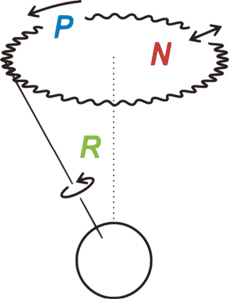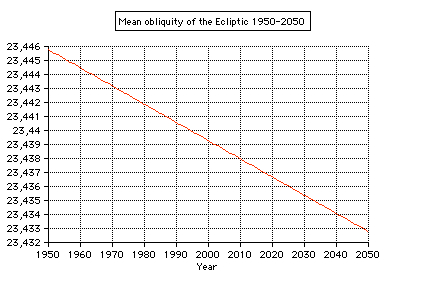|
|
GeoAstro Applets |
Astronomy |
Chaos Game |
Java |
Miscel- laneous |
Physics Quiz |
Who is Who ? |
The Inconstant Earth
|
The motion of the Earth around the Sun and the position of
the axis of Earth's rotation are disturbed by the Moon, the Sun, and by
the planets. The position of the axis of Earth's rotation (R) is
disturbed by precession (P) and nutation (N):
Image:
Wikipedia The axial
precession is completing one circuit in about 26,000 years (Platonic
year). The data of the diagrams below are computed by my Planet Applet. The nutation is
mainly caused by the Sun and Moon, continuously changing location
relative to each other and to the Earth. 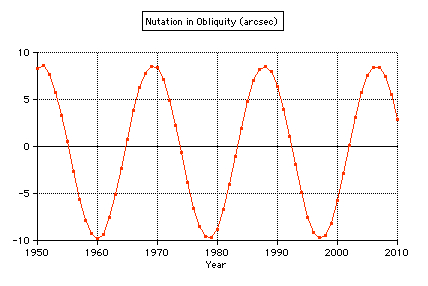 The principal period of +/- 9.2'' of the nutation in obliquity is 18.61 years (6798 days), corresponding to the regression (retrograde rotation) of the moon's nodal line. As shown bekow there are smaller periods of half a year (182.62 days) and 13.66 days (half of a sidereal month). 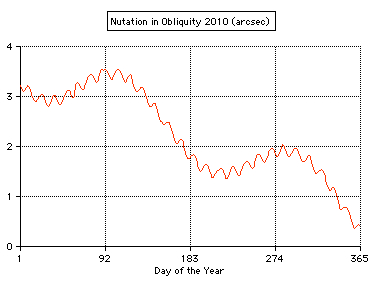 The nutation in
longitude has an amplitude of +/- 17.2'' and the same periods:
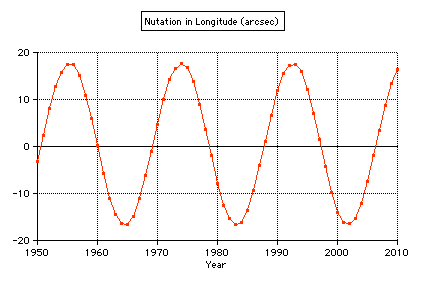 18.61 years period 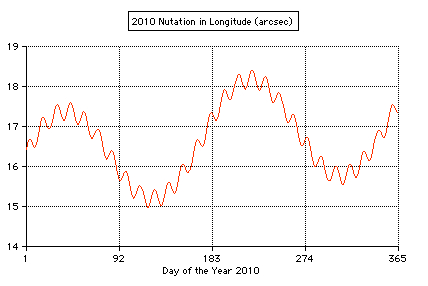 half a year and half a sidereal month periods. The annual
change of the Earth's orbital velocity around the Sun is also showing
perturbations:
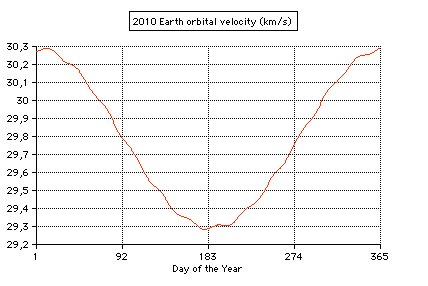 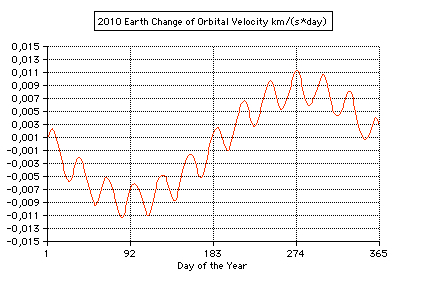 According to
Kepler's second law the orbital velocity of a planet should have a
maximum passing the perigee, which is around Jan 3 for the Earth. Due
to the perturbation by the moon the date of maximum orbital velocity of
the Earth differs by up to 10 days from the perigee:
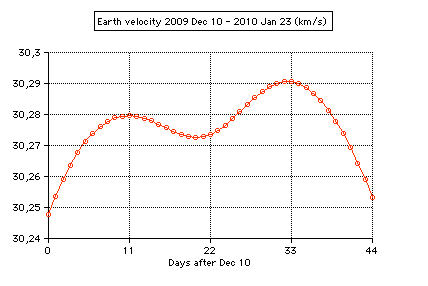 2010 perigee: Jan 03, maximum velocity 8 days later on Jan 11. 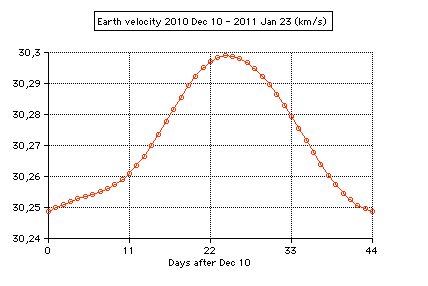 2011 perigee: Jan 03, maximum velocity on Jan 03. 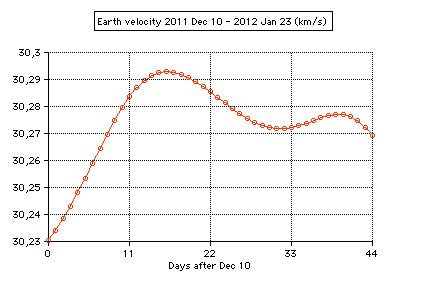 2012 perigee: Jan 05, maximum velocity 10 days earlier on Dec 26. The distance of
the Earth from the Sun is also disturbed:
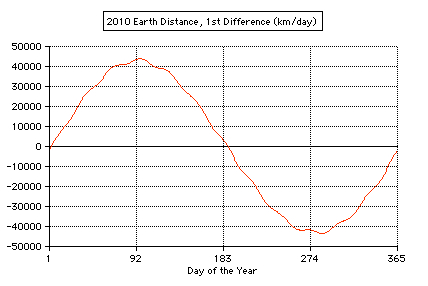 The radial velocity of the Earth. 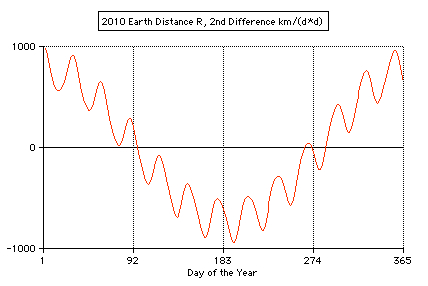 The radial acceleration of the Earth. Furthermore the
Earth's axial tilt (obliquity of the ecliptic) is not constant: it
varies between 22.1° and 24.5°, with a 42,000 year period, and
at present, the tilt is decreasing by 0.013° per century or 0.47''
per year.
The data of the
diagrams are computed by my Planet Applet, using the most
important terms of the VSOP87 planetary theory used to to compute the
heliocentric ecliptic longitude, latitude and distance of the planets.
The accuracy is 0.5'' for the nutation in longitude, and 0.1'' for the
nutation in obliquity.
|
|
|
|
|
© 2010 J. Giesen
Updated:
2010,
Mar
15
